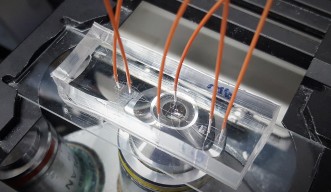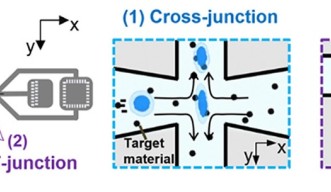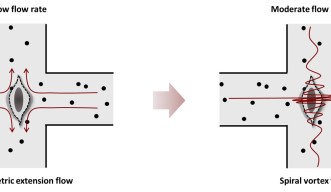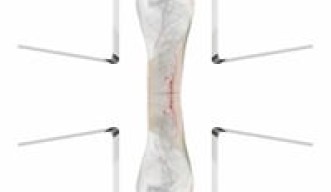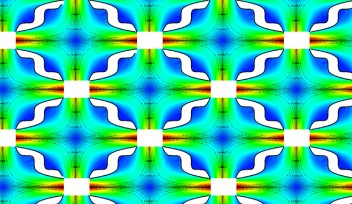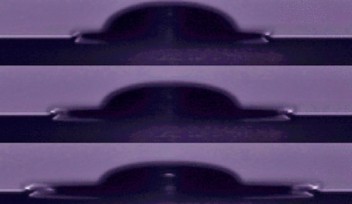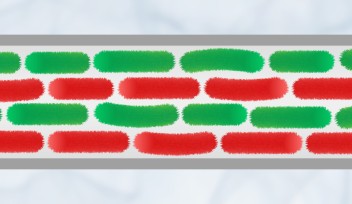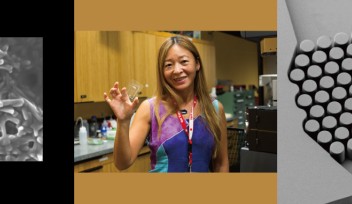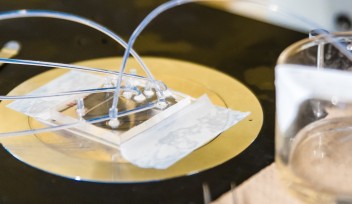Caught in a spin: spiral vortex streamlines delivery of nanomaterials into cells
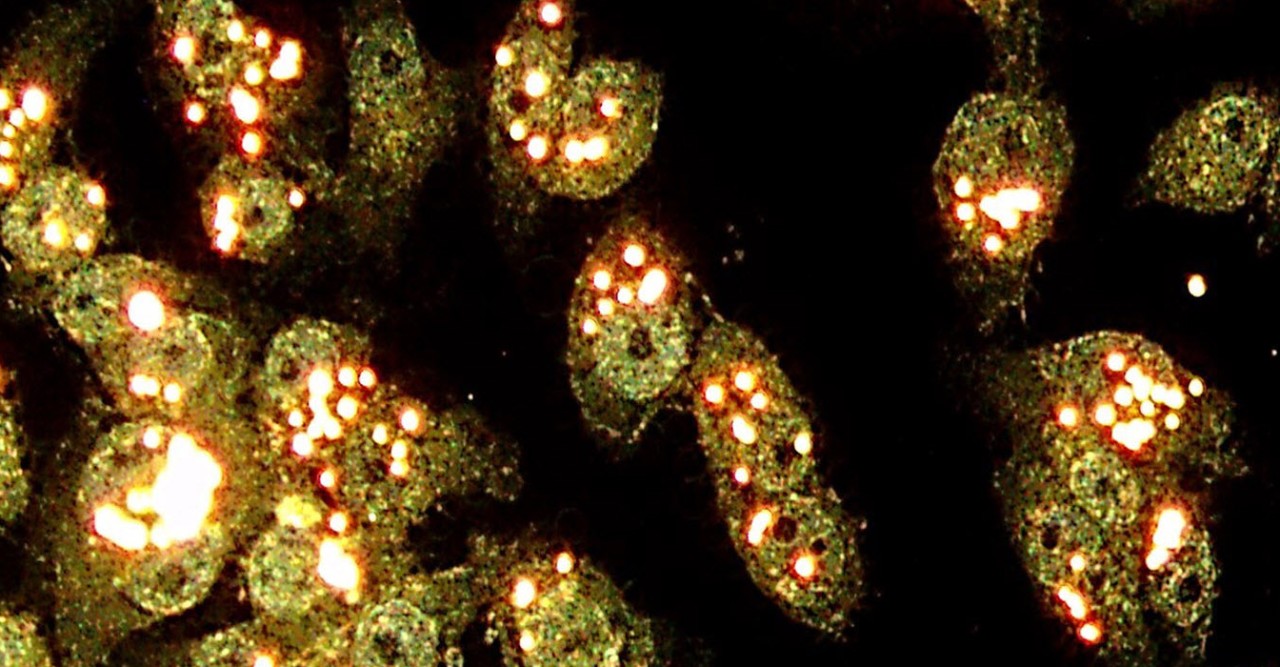
The membrane surrounding cells acts as a selective barrier, cradling and protecting the cell’s contents from the external surroundings and choosing which substances to allow in or out of the cell. Scientists have therefore struggled to engineer efficient methods of delivering nanomaterials, such as DNA, proteins and drugs, into cells.
Now, researchers from Korea University, in collaboration with the Okinawa Institute of Science and Technology Graduate University (OIST), have developed a rapid and efficient delivery method that uses the power of a tiny fluid vortex to deform the cell membranes. Their findings were recently published in the journal, ACS Nano.
“Current methods suffer from numerous limitations, including issues with scalability, cost, low efficiency and cytotoxicity,” said Professor Aram Chung from the School of Biomedical Engineering at Korea University, who led the study. “Our aim was to use microfluidics, where we exploited the behavior of tiny currents of water, to develop a powerful new solution for intracellular delivery.”
The new device – a microfluidic chip called a ‘spiral hydroporator’ – can deliver nanomaterials into around one million cells each minute, with up to 96% efficiency. Moreover, the entire process is achieved without irreversibly damaging the cells, with up to 94% of the cells surviving the process.
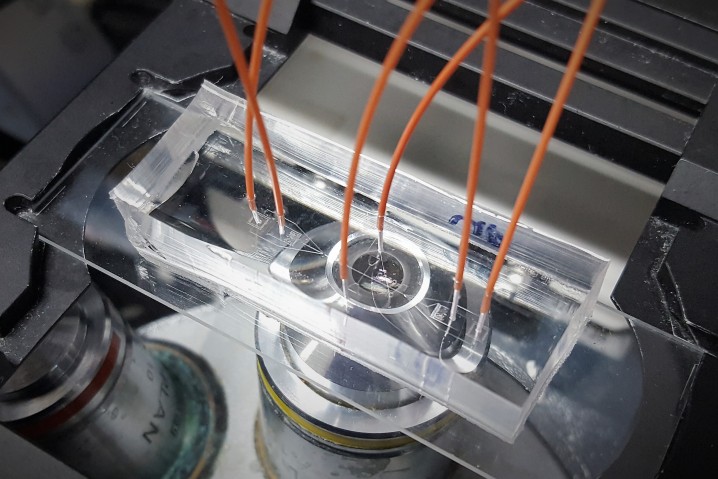
“The chips are really affordable to make and simple to use,” said Professor Chung. “You just pump a fluid containing the cells and nanomaterials in two ends, and the cells – now containing the nanomaterial – flow out of the other two ends. The entire process takes only one minute.”
Going with the flow
To create the device, the scientists designed the channels in the microfluidic chip in a specific configuration, with a cross-junction at the center of the chip and two T-junctions above and below.

When the scientists from Korea University first studied how different channel geometries and flow rates affected the cells, one specific scenario – a cross-junction where moderately flowing streams of fluid collided from opposite directions – stood out as peculiar.
“We saw a really interesting behavior exhibited by the cells, where they danced around in the center of the cross-channel,” said Professor Chung.
By adding a fluorescent dye into one of the fluid streams, the researchers discovered that a spiral vortex had formed.
“We wanted to fully understand the fluid mechanics causing this effect, and the Micro/Bio/Nanofluids Unit led by Professor Amy Shen at OIST was already working on the problem,” Professor Chung added.
The two groups of scientists therefore teamed up. Using the OIST supercomputer, the OIST unit developed and ran simulations of how the opposing fluid streams interacted at the cross-junction, at different rates of flow.
“At a low flow rate, we found that the two impinging streams of fluid parted symmetrically and flowed away from the cross-junction, as documented in the literature,” said OIST scientist, Dr. Simon Haward. “However, as we increased the flow rate, we saw instabilities arise which caused multiple vortices to form, eventually merging into one large spiral vortex.”
“Our simulation explained the unusual phenomena that Chung’s group had observed and showed exactly how certain parameters, such as flow rate, affected vortex formation,” added OIST postdoctoral researcher, Dr. Daniel Carlson.
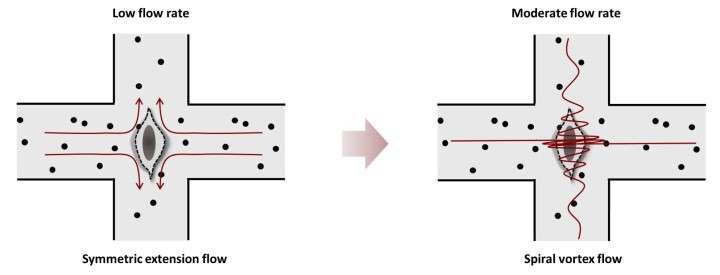
The formation of the vortex is key to the rapid and effective delivery of nanomaterials into the cells. As each cell passes into the center of the cross-junction, the force of the spiral vortex deforms the cell, causing tiny nanoholes to arise in the membrane. The nanomaterials in the fluid are then able to move into the cell through these nanoholes. The cells are then swept away from the cross-junction and collide with the walls of the T-junctions, which causes further deformation of the cell membrane and increases the efficiency of delivery. After deformation, the nanoholes in the membrane reseal themselves and the membrane is repaired.
Boosting cell biology research
Using spiral hydroporation, the team at Korea University were able to deliver specific nanomaterials into cells, including RNA and gold nanoparticles.
More efficient and low-cost delivery of DNA, RNA and proteins such as CRISPR-Cas9 into large numbers of cells could assist research into topics including gene therapy, cancer immunotherapy and stem cells, Chung said.
Gold nanoparticles can also be used for delivering drugs, imaging molecules and organelles within cells, and for diagnosing disease.
“Overall, there are a vast array of applications for spiral hydroporation and interest in the chip has been very high,” said Professor Chung. “Researchers need a more efficient, simple, rapid and low-cost means of intracellular delivery – our chip is a great new avenue for achieving that goal.”
Specialties
Research Unit
For press enquiries:
Press Inquiry Form










